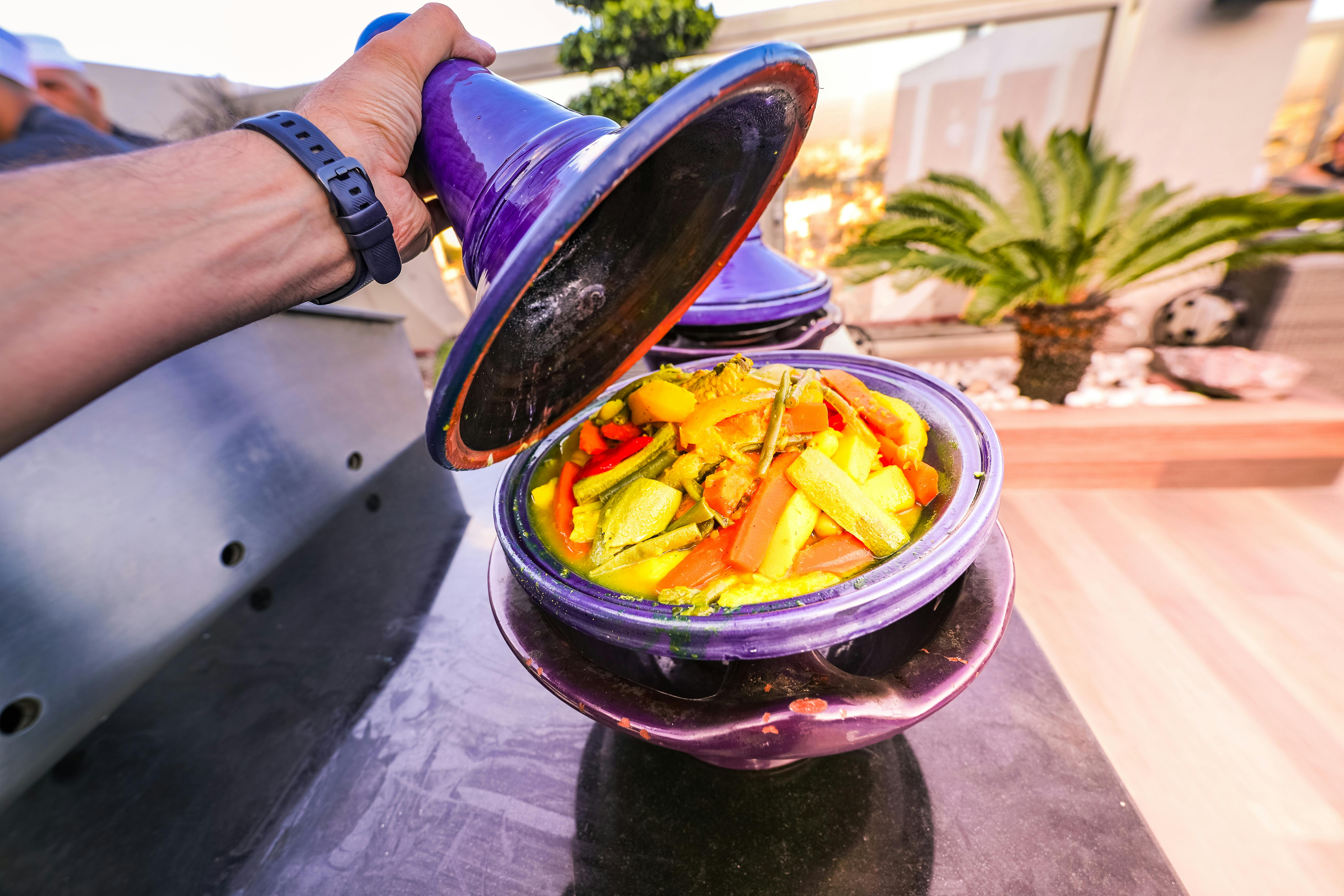A Dive into the Rich, Spicy Flavors of Moroccan Cuisine
Moroccan cuisine is a vibrant tapestry of flavors that beautifully weave together the country's rich history and culture. This culinary journey will introduce you to the unique dishes, cooking techniques, and ingredients that make Moroccan food a delightful culinary adventure.

Section 1: A Taste of Moroccan Cuisine
Moroccan cuisine is a fascinating blend of Mediterranean, Arabic, Berber, and French influences. It’s known for its bold, aromatic spices like cumin, cinnamon, turmeric, and saffron, which are skilfully blended to create flavorful, hearty dishes. The culinary tradition also showcases a variety of fresh, locally sourced ingredients, such as olives, figs, and oranges.
Section 2: Signature Dishes
One cannot discuss Moroccan cuisine without mentioning tagine, a slow-cooked stew named after the traditional clay pot it’s cooked in. Another iconic dish is couscous, a fine grain often served with meat, vegetables, and a rich broth. There’s also the pastilla, a savory-sweet pie typically filled with pigeon meat, almonds, and dusted with powdered sugar.
Section 3: The Art of Moroccan Bread Making
Bread, known as khobz, is a staple in Moroccan meals and is traditionally baked in communal ovens. There’s a variety of types to sample, from the fluffy msemen pancakes to the cracked barley bread, known as khobz bouchiar.
Section 4: Drinks to Quench the Thirst
Moroccan mint tea, sweetened with sugar and served in small glasses, is the country’s national drink. It’s more than just a beverage; it’s a symbol of hospitality. For something stronger, try the locally produced wines, which have been gaining international recognition.
Section 5: The Sweet Side of Morocco
Moroccan desserts are a delightful blend of sweet and spice. Popular choices include the honey-soaked chebakia, almond-filled briouats, and sellou, a nutty concoction often consumed during Ramadan.
Moroccan Cuisine: Quick Facts
- The Moroccan spice blend, Ras El Hanout, can contain up to 35 different ingredients.
- Couscous, the national dish, is traditionally eaten on Fridays.
- Argan oil, produced only in Morocco, is a common ingredient in dishes and beauty products.
In conclusion, Moroccan cuisine is a flavorful adventure that engages all your senses. From the aromatic tagines to the sweet mint tea, there’s a dish or drink that will tantalize your palate. As you dive deeper into this culinary landscape, you’ll discover that each bite tells a tale of the country’s rich history and diverse culture. So, why not try your hand at a Moroccan recipe today and embark on your own delicious journey?




